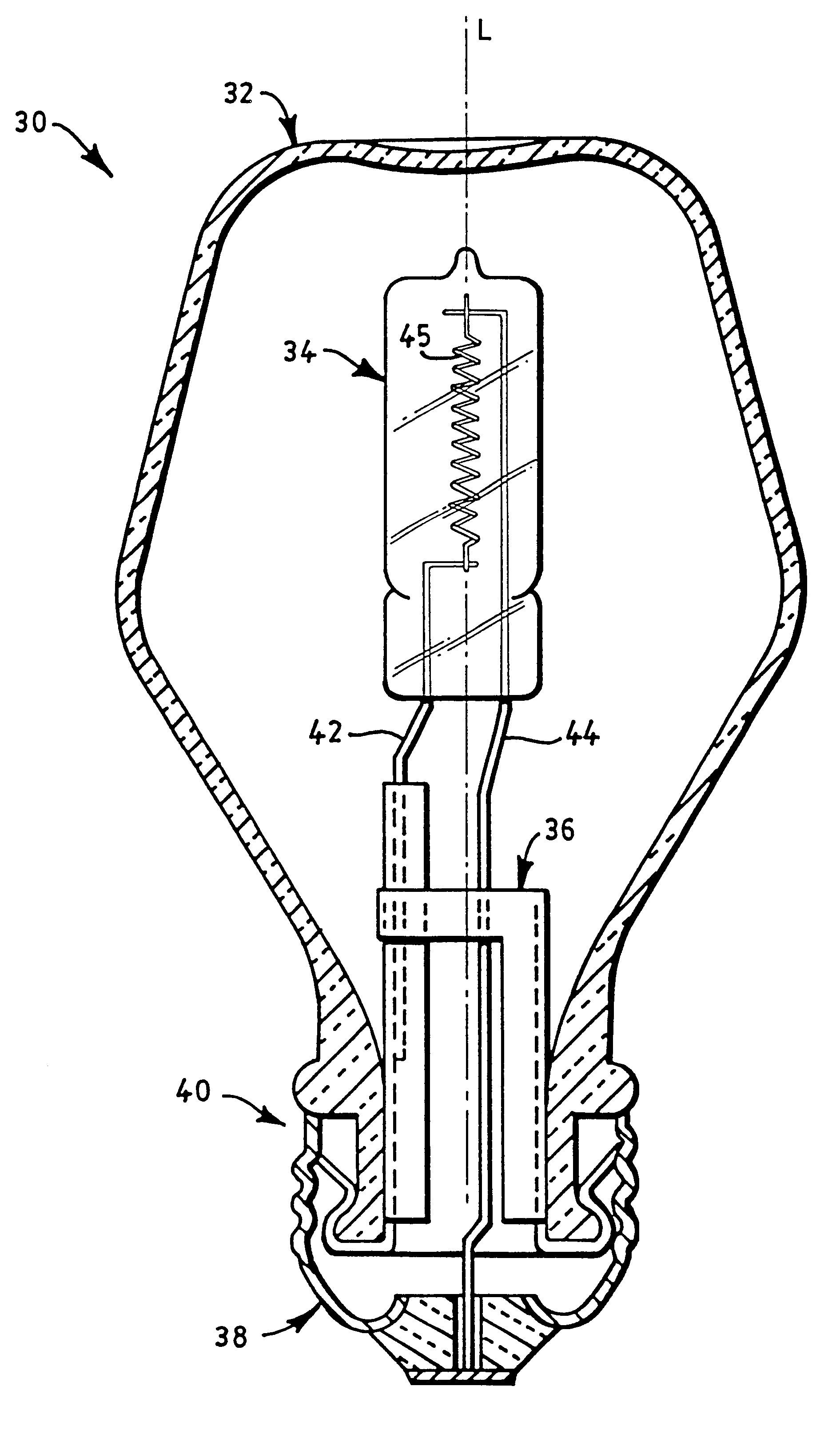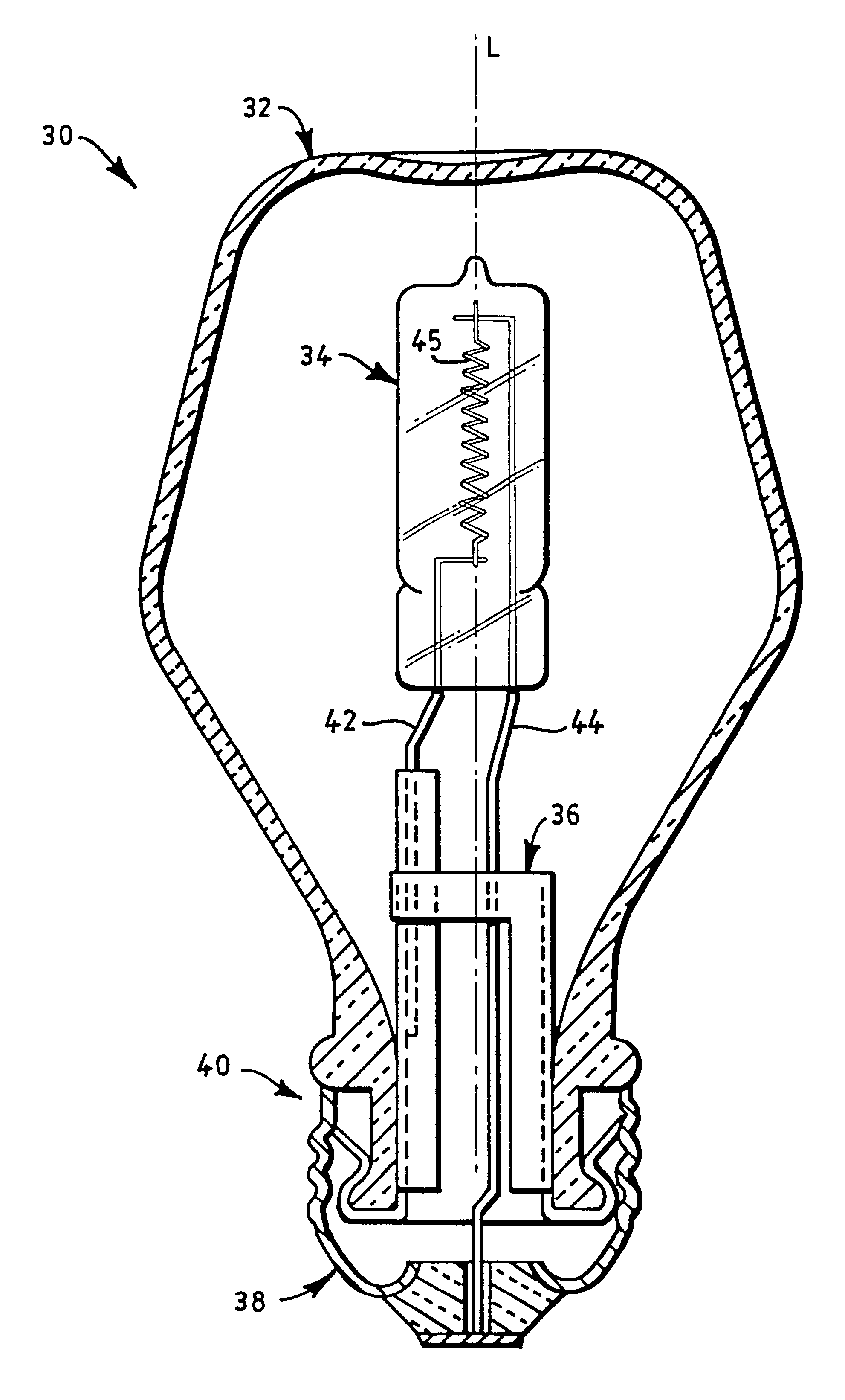Long life halogen cycle incandescent lamp and glass envelope composition
a technology of halogen cycle and incandescent lamps, which is applied in the direction of energy saving incandescent lamps, energy efficient lighting, sustainable buildings, etc., can solve the problems of glass being unusable, affecting lamp performance, and rupturing the lamp seal
- Summary
- Abstract
- Description
- Claims
- Application Information
AI Technical Summary
Benefits of technology
Problems solved by technology
Method used
Image
Examples
Embodiment Construction
Alkali-poor variants were used each time for the production of the example glasses, such as quartz sand, aluminum oxide, magnesium carbonate, calcium carbonate and barium carbonate, as well as zirconium sand. If desired, cerium oxide and barium bromide can be added. The well-homogenized mixtures were melted in the laboratory in a Pt / Rh crucible at 1600-1650.degree. C., refined and homogenized. The glass was drawn perpendicularly in a laboratory pulling device. The glasses were free of disruptive small crystals. Table III shows an example of a glass (A5) according to an aspect of the invention as well as a comparative example (V1) with their compositions (in wt. % based on the oxides) and their essential properties.
The reboil temperature is indicated along with the transformation temperature (T.sub.g). The reboil temperature is the temperature at which a visually bubble-free glass sample at room temperature suddenly shows bubble formation at the interface with a metal (sample holder,...
PUM
| Property | Measurement | Unit |
|---|---|---|
| pressure | aaaaa | aaaaa |
| weight ratio | aaaaa | aaaaa |
| weight ratio | aaaaa | aaaaa |
Abstract
Description
Claims
Application Information
 Login to View More
Login to View More - R&D
- Intellectual Property
- Life Sciences
- Materials
- Tech Scout
- Unparalleled Data Quality
- Higher Quality Content
- 60% Fewer Hallucinations
Browse by: Latest US Patents, China's latest patents, Technical Efficacy Thesaurus, Application Domain, Technology Topic, Popular Technical Reports.
© 2025 PatSnap. All rights reserved.Legal|Privacy policy|Modern Slavery Act Transparency Statement|Sitemap|About US| Contact US: help@patsnap.com


